|
 History of the Video Game Console History of the Video Game Console
-- The 1970s -- |
The 1970s marked the beginning of home video gaming as we know it today. Ralph Baer, uniformly known as the father of the video game console, created and developed the infamous Brown Box, which would later become the revolutionary Magnavox Odyssey. Few could honestly admit that this humble beginning would result in the multi-billion dollar market of today. The advent of the microprocessor proved to be the key.
While some focused on mastering their dance moves to impress at the local Disco, others devoted their time in developing the first microprocessor and the C programming language. Their efforts resulted in the birth of modern computing. For once, the electronic components that once occupied more than 15,000 square feet of warehouse space was made available to the general public at a reasonably affordable rate in the form of the home computer. This technological jump enabled the creation of the home video game console. Many companies entered into this fledging market hoping to capitalize on this newly developed technology - some with greater success than others. The decade spawned myriads of PONG systems and also introduced us to a new world - programmable cartridge based systems (which this article focusing upon). Gone were the days of the dedicated console and ushered in were the true parents of today's hardware. Fairchild Semiconductors was the first to introduce us to this advancement in the form of their Video Entertainment Center (Channel F), but Atari ended up being the king of this era with the release of the Video Computer System (2600). The decade marked another significant feat - the beginnings of globalization within the gaming community. Not only were systems released in various countries, but the first BBS (bulletin board system) enabled gamers from around the world to share their video game experiences via text forums. The following takes a quick snapshot of each main console (or technology) that was released during this decade.
|
|
1972 - Magnavox Odyssey |      |
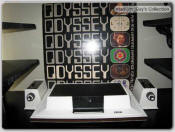
| The granddaddy of the home video game console. There were no processors in this system - just a series of transistors, resistors and capacitors. Pin-outs were contained on the individual game cards and graphical output was produced with white blocks against a black background. Plastic colored overlays were provided to put over your television screen to enhance the graphics a bit. | 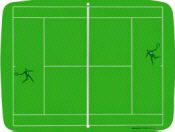 |
Fun Fact: Consumers were told that this system would only work with Magnavox brand televisions, which was completely inaccurate. |
| |
1975 - PC-50X Family |       |
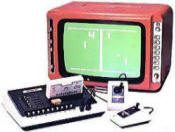
| Improvements to the initial General Instruments AY-3-8500 (PONG) chip resulted in more game variations on this classic format. Manufacturers wised up made a breakthrough - include the new chip(s) on cartridges. This eliminated the need to develop a new system for every chip and significantly drove down cost. There were a total of eight chip variations that were produced and the pin-out cartridges contained up to 10 games. | 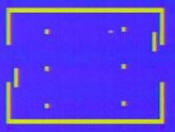 |
Fun Fact: The initial models still only output the games in black and white. Later technological enhancements added color (4 colors) and sound. |
| |
1976 - Fairchild Video Entertainment System (Channel F) |     |
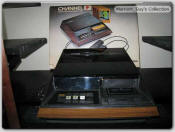
| The Fairchild Video Entertainment System (later changed to Channel F) was the first console to feature programmable cartridges. Featuring built-in games, 8' controller cords and being the first to utilize microprocessor technology, the Channel F was quite innovative at the time of its release. The following year the Atari Video Computer System (specifically named this way to directly compete against Fairchild's similarly entitled system) put the stake through this fledgling console's heart. | 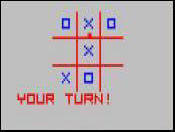 |
Fun Fact: Andrew Grove and Robert Noyce, two employees of Fairchild Semiconductors, would eventually start a new company that some of you may have heard of: Intel. |
| |
1976 - RCA Studio II |    |
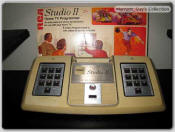
| RCA lost the race to Fairchild Semiconductors to produce the first programmable console available to the public. The Studio II lacked controllers and relied upon the built-in numeric keypad to control the action. Another glaring fault of this system is the black and white video output. Though it has been proven that a few games were designed for color, RCA's rush to get this product to market resulted in the absence of this basic feature. | 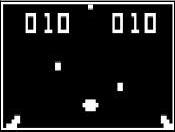 |
Fun Fact: Ralph Baer, the designer of the Odyssey, originally approached RCA to be the initial manufacturer of his new system. RCA declined and the rest is a bad RCA memory. |
| |
1976 - 1292 APVS Family |     |
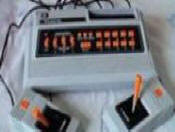
| The 1292 Advanced Programmable Video System (APVS) family of consoles was basically Europe's answer to the Fairchild Channel F. The initial developer, a German company called Radofin, was one of the first companies to license programmable hardware technology to many other companies (much like The 3DO Company did with Panasonic and Goldstar). This strategy produces extremely positive results as nearly 25 different models were produced by various manufacturers. | 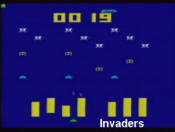 |
Fun Fact: The Emerson Arcadia, released in 1982, was first believed to be a 1292 clone since it uses the same Signetics CPU. In fact, the Arcadia's coprocessor was an upgrade. |
| |
1977 - Atari Video Computer System (2600) |     |
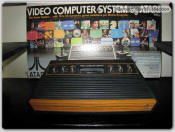
| Atari's mother ship set the standard for programmable based video game systems in the 1970s. Code named 'Stella' (after one of the designer's bicycle), the 2600 was the first system to come close to delivering an arcade experience in the comforts of one's living room. This would not have been possible if it wasn't for Warner Communication. Atari Inc., experiencing significant cash flow problems, approached the media giant who eventually purchased the company and completed development of this classic system. | 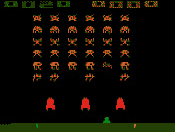 |
Fun Fact: In 1982, Atari changed the name of this console in Atari 2600 due to the fact that their newly released system as dubbed the Atari 5200. |
| |
1977 - Bally Home Library Computer (Professional Arcade Astrocade) |  |
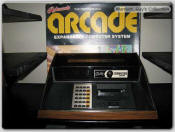
| The Home Library Computer was designed by Bally's video game division Midway (creators of the infamous Mortal Kombat series). The technology was quite impressive for the time and rivaled the popular Atari 2600 in terms of graphical output. The most innovative facet of this system is its multi-functional 'pistol' controller, featuring a trigger action button and a multi-directional joystick know that could also serve as a paddle controller. Bally suffered from lack of arcade license support (Atari ate these up) and eventually could not compete. | 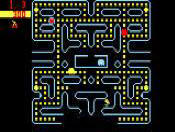 |
Fun Fact: Though the cartridges resemble audio cassettes, they are in fact just regular carts. They were designed this way to prevent cart damage (they do not protrude at all). |
| |
1978 - Magnavox Odyssey 2 Philips VideoPac |     |
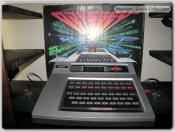
| The Odyssey 2 was the first console to incorporate a full alpha-numeric keyboard along with its initial hardwired joystick controllers. Though technically inferior to the rival Atari 2600, the Odyssey 2 did feature flicker-free graphics, a point its competitor could not make. This console was very successful and was manufactured throughout the world by notable companies including Philips, Radiola and Schneider. This was also the first console to actively market itself as an educational toll in addition to its programming ability. | 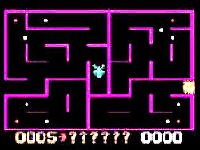 |
Fun Fact: Almost all of the games for were written by one person - Ed Averett, a former Intel employee who worked closely in the development of the O2's Intel 4040 processor. |
| |
1978 - Interton VC-4000 |      |
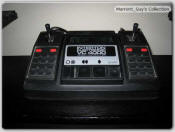
| It is undetermined if the German based company Interton developed this system on its own, or if they licensed the 1292 APVS technology from Radofin. There are minor differences in the cart size and programming, but few would argue that it is anything but a sibling of the 1292 APVS. The VC-4000 was mildly successful, with models released in Europe, Australia and Argentina among others. | 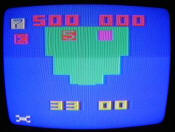 |
Fun Fact: The Interton VC-4000 is considered to be in the 1292 APVS Family of consoles though there are some minor compatibility differences in cart size and game releases. |
| |
1978 - APF Imagination Machine |  |
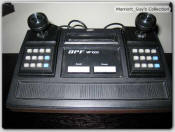 | APF Electronics jumped into the video game craze with their release of the APF-M1000 console in 1978. This 8-bit system was designed to compete against the heavyweight Atari 2600. It did not even come close. But what makes this system unique is the addition of the APF MP-10 computer add-on that was released in 1979. The base console could be docked into this module to create a hybrid computer, one of the first of its kind. | 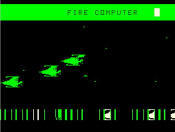 |
Fun Fact: Although the APF IM game library only contains 15 official releases, many more applications were available made available by its extremely active home-brew community. |
|
1979 - Bandai Super Vision 8000 |  |
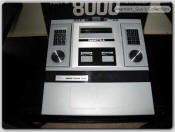 | The Bandai Super Vision 8000 debuted in 1979 and was the very first programmable game cartridge system released in Japan. This timeline (1979) and notoriety (initial entry and the developer, Bandai) may be a surprise to some simply due to the fact that Japan has been a leader in video game technology for some time, with big hitters Nintendo and Sega in the fold. Though technically superior to the competition, the high price tag ($1.3K in USD comparable in 1979) quickly doomed this console after just one year of production. | 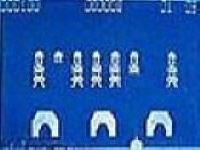 |
Fun Fact: Due to its controller design, some feel that this is a clone of the Intellivision, when in fact the Super Vision 8000 was released prior to Mattel's system. |
| |
1979 - Mattel Intellivision |    |
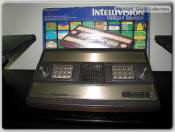 | The chief challenger to the Atari 2600, the Intellivision sported new disc controllers (either loved or hated by gamers) and superior graphical and auditorial capabilities. With few attractive arcade or movie licenses available to them due to Atari's aggressive nature in this field, Mattel had to rely upon lesser known titles but did produce an innovative add-on - the Atari 2600 Adaptor. The library of compatible games now more tripled for this system and the Intellivision would continue to sell into the 1990s. | 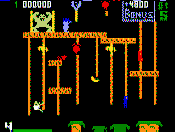 |
Fun Fact: After possibly copying their controller design of the Super Vision 8000, Mattel approached Bandai to be the exclusive distributor of the Intellivision in Japan. |
| |
The 1970s ended up being one of the most influential decades in the history of video gaming hardware. Technological breakthroughs abounded and successes (and at times failures) of companies that participated during this time helped inspire behemoths like Nintendo and Sega to develop into the gaming force they would become in the following decade. Dancing was definitely a driving force during this time period - thank goodness the programmers fingers and not the John Travolta wannabes ended up standing the test of time.
|



